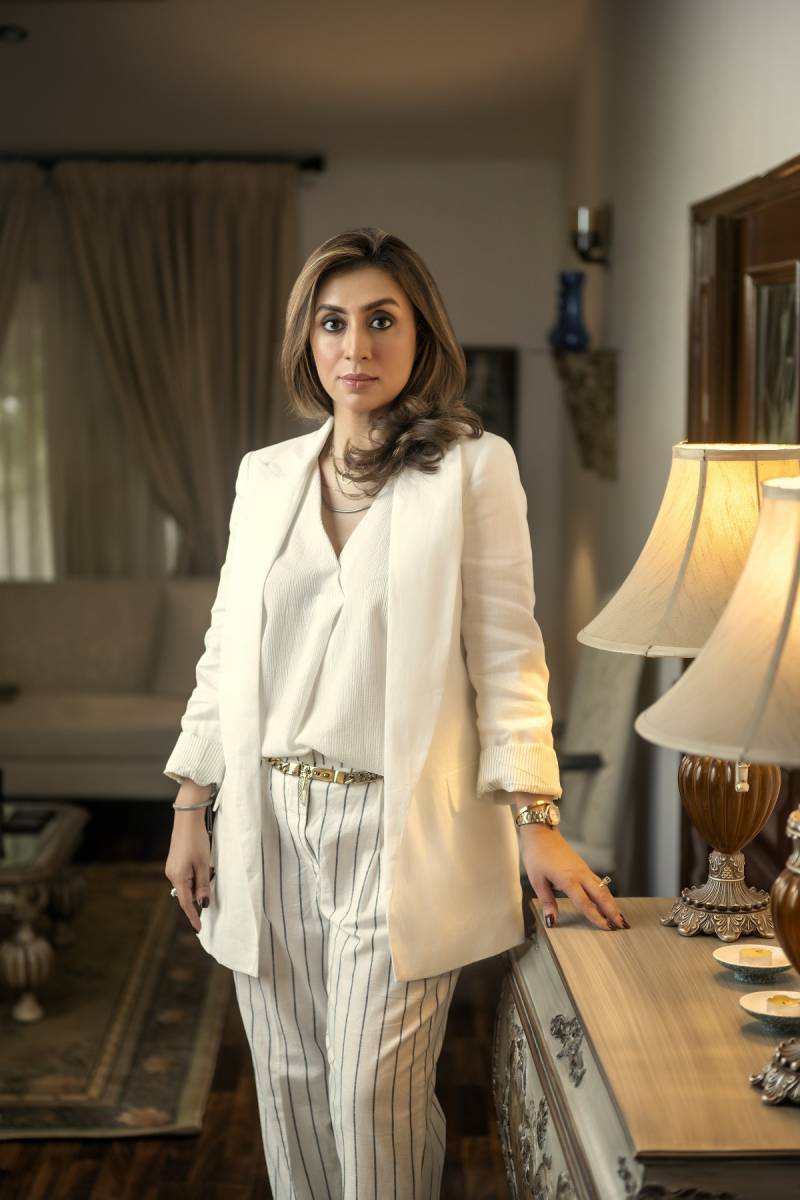From Her Early Beginnings to Her Triumphant Return: An Exclusive Interview with Fashion Designer Nida Ali

Meet Nida Ali, a highly talented and passionate fashion designer who has made a comeback in the industry. With a background in Textile Designing, Nida embarked on her fashion journey in 2004, creating her first solo collection of lawn prints.

After taking a break from the industry, she has returned with a renewed motivation and a thirst to create unique and elegant designs which she exclusively talks to us about in this interview. Read on…

1. Hello Nida, pleasure to have you here. What inspired you to pursue a career in fashion design? How long have you been in the industry for?
I’ve been in the fashion industry since 2004, had been away for quite some time but now back in the game. I had my education in Textile Designing and that’s how I started with my first lawn prints as a solo collection on its own.

2. What motivated you to return to the fashion industry after your break? How do you feel your time away from the industry has influenced your design aesthetic or approach?
The motivation had always been there but I was just tied up with so many other responsibilities. My love to create had always been my happy place and a big motivation towards creating something new always. I love blending unusual colours which had always been my strength. I think staying away from work has not affected my aesthetic sense at all, but the thirst to create more and more each time, that I really have to put my mind to rest and take a break from overflowing ideas running over so rapidly.

3. Can you share any specific goals or aspirations you have for your comeback in the industry?
I actually have many; they will be obvious as time unfolds.

4. Have you noticed any significant changes in the industry during your absence, and how do you plan to adapt to them?
Fashion is changing rapidly but all of it is not necessarily adaptive. It’s important to stick to that classic element with one fashionable accent touch to make it versatile. Elegance is the key note before creating any new design.

5. Can you discuss any new techniques, materials, or technologies that you're excited to incorporate into your designs? What role does sustainability play in your design philosophy?
You see it’s a fast pace industry. Techniques keep upgrading but its real essence remains the same. I like to keep my designs very simple yet elegant for which I mostly integrate unusual colour palettes with different textured fabrics and an accent of different embroidery or printing techniques with cuts. Originality plays the role in sustainability.

6. What are your thoughts on the impact of technology on the future of fashion design? How do you see the future of fashion evolving, and what role do you think technology will play?
I believe that technology continues to have a significant impact on the future of fashion design. It has brought about various advancements such as digitalisation, on-demand fashion to reduce costs and minimize waste, and the use of online stylists to deliver clothes directly to customers. With consumers becoming increasingly impatient, the fashion industry has adopted innovative in-house production approaches to shorten the production time frame. These advancements have streamlined the fashion process and allowed for more efficient and convenient experiences for both designers and consumers.

7. How do you navigate the fine line between being inspired by other designers and avoiding plagiarism?
It’s very simple! When you are creative your mind works in a direction where there would be a natural urge to stand out. This will result in creating something different and new. We all need inspiration to open up our minds to something unique and travelling is the best way to do so. It’s very important to feel and be comfortable in your own skin to create. I always design what I would like to wear.

8. How do you stay updated with the latest fashion trends and industry developments?
My biggest tool to keep myself updated is travelling. It opens up my mind like nothing else. Exposure to social media also plays an important role.

9. Can you share any challenges you've faced in the fashion industry and how you overcame them?
When I began my journey in 2004, the fashion industry presented numerous challenges, particularly in terms of marketing. At that time, social media was not yet influential, and glossy magazines were the primary means of reaching consumers, limiting our reach. To bridge the gap between sellers and buyers, retail stores played a crucial role. However, the landscape has significantly evolved since then. Nowadays, studios and home studios have gained prominence, offering a more exclusive experience. Online retailing has become commonplace through e-stores and various online platforms, allowing designers to showcase their collections globally on a commission basis. Additionally, the mindset of both designers and consumers played a vital role. Back then, a few established designers held a monopoly, making it challenging for new designers to rise. Consumers' preferences were heavily influenced by these established designers. However, the present time is different, with many emerging designers making remarkable progress in a short span. Consumers are now more aware, appreciating new creative designs. If designers consistently produce high-quality designs, they can establish themselves relatively quickly, unlike the time when I started my journey.

10. What advice would you give to aspiring fashion designers who are just starting their careers?
Just be original! This will be their key to long-term success. Please focus more on creating unique and innovative designs not money; money is an important factor to generate the production but it will follow automatically if both your designs and marketing is all intact.
Brand ; Designer @nidaali.official
Strategy - PR & Execution: We3communications
